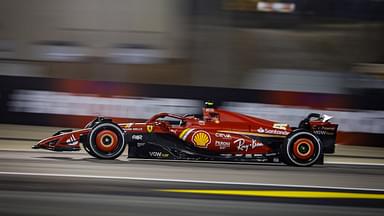Formula 1 cars and their chassis have undergone massive changes since the sport had its first world championship in 1950. Back in the day, the safety measures in F1 cars were minimal. Meanwhile, today, safety is of paramount importance and no teams compromise on the same. As a result, the chassis of the F1 cars have been modified accordingly. From the 1950s till today, three types of chassis have been used. The details of the same are provided below.
F1 chassis in 1950s: Steel tubular chassis
In the 1950s, the bodywork of the cars was made from aluminum along with steel tubular chassis frames. According to gomechanic.in, these types of chassis are three-dimensional and have a relatively strong structure.
The major downside is that the cars are usually heavier since additional frames are usually needed to support the main structure. That is where the monocoque chassis (explained later) is far more useful.
However, not all the years in the 1950s did the cars use F1 specs. In 1952 and 1953, the cars used F2 specs as very few sides had the resources to use F1 specs.
The teams only went back to the F1 specs in 1954 when new regulations were introduced. Hence, in both 1952 and 1953, the chassis were standardized as they are in F2.
1962 featured the first monocoque chassis
The Lotus 25 was the first car that used the monocoque chassis in 1962. The chassis was invented by renowned English engineer Colin Chapman. He was the man who founded Lotus Cars back in 1952 and introduced his team in the 1958 championship.
A monocoque chassis is one in which the bodywork of the car is the only thing that provides the structure to the vehicle. In other words, there is no additional frame that helps hold the bodywork.
As a result, a monocoque chassis is usually lighter than most others and helps improve aerodynamic performance. This kind of chassis was primarily used until 1981, a year when the sport changed forever.
Carbon fiber monocoque chassis debuted in 1981
The word ‘Carbon fiber’ is extensively used today in F1 since the cars continue to use this type of chassis. This type of chassis provides the benefits of both the steel tubular chassis and the original monocoque one.
The McLaren MP4/1 in 1981 was the first car that used a carbon fiber monocoque chassis. This type of chassis is not only lighter but is also stronger than the steel tubular chassis that were initially used in F1 in the 1950s.
As a result, this type of chassis provides even better protection for drivers than the steel tubular chassis of those days. Today, more than 60-70% of an F1 car’s weight is made up of carbon fiber, as per autosport.com.
Why is a carbon fiber chassis more beneficial than the other two?
As per alastairgibson.com, the most important benefit of a carbon fiber chassis is arguably the light weight. As a result, the aerodynamic performance of the cars improves, and the racers can achieve higher top speeds.
The light weight also helps the drivers maneuver the car better in corners. Moreover, the light weight of the car also helps in fuel efficiency.
Secondly, unlike the original monocoque chassis, a carbon fiber monocoque chassis has better strength. Consequently, the drivers are better protected in case the car has a collision with the barricades.
That is not the only safety advantage of a carbon fiber chassis. The carbon fiber helps dissipate the force in times of an impact. As a result, even during a high-speed crash, the impact that a driver will sustain in the cockpit of the car is minimized.
Another benefit of the carbon fiber chassis is to minimize the negative environmental impact. Since F1 has a commitment to go net carbon zero by 2030, the lightweight nature of the carbon fiber chassis will help reduce fuel commission, and as a result, emissions. Lastly, this material is also recyclable.
How much does an F1 chassis cost?
In an F1 car, the engine is by far the most costly element. As of 2023, the average cost of an engine was a whopping $10.5 million. Among the other elements, the chassis is one of the costliest.
A carbon fiber monocoque chassis costs approximately between $650,000 and $700,000. The cost of both these elements is included in the strict cost cap introduced by F1.
For the 2024 season, all teams will have a cost cap of $135 million. This means that all sides will need to ensure that their costs for car parts, testing, and development do not exceed this amount.
F1 will once again change its rules for chassis in 2026
Since the next major regulation changes will be introduced from the 2026 season onwards, F1 believes it is the perfect time to also introduce new rules for the chassis of the cars.
In 2026, F1 hopes to have cars that are 50kg lighter. These cars will also be shorter and narrower, to promote better racing.
Since the engine of an F1 car and the chassis are closely connected, FIA’s head of single-seaters, Nikolas Tombazis, told motorsport.com’s Italian website that both will have to evolve together. Hence, the chassis will also have to be made accordingly to provide adequate support to the rest of the car’s structure.





